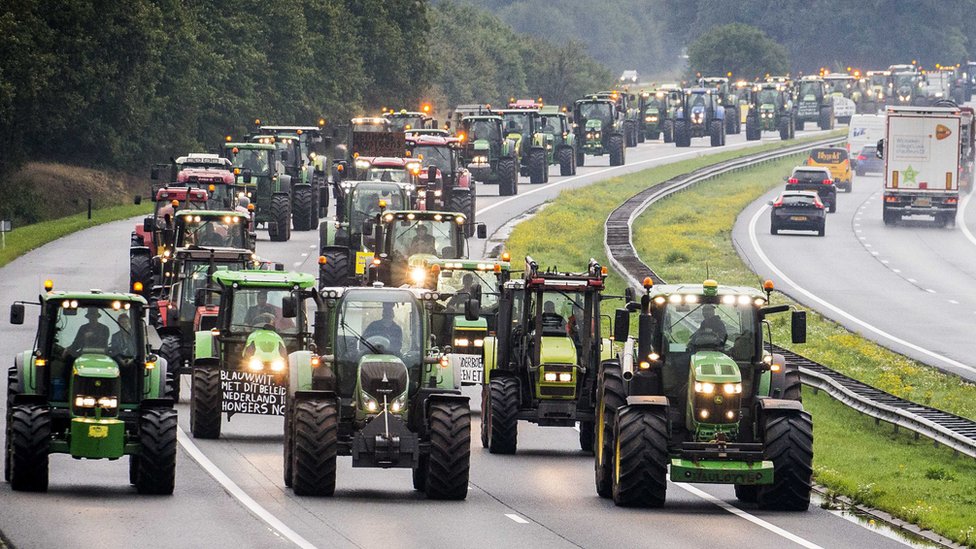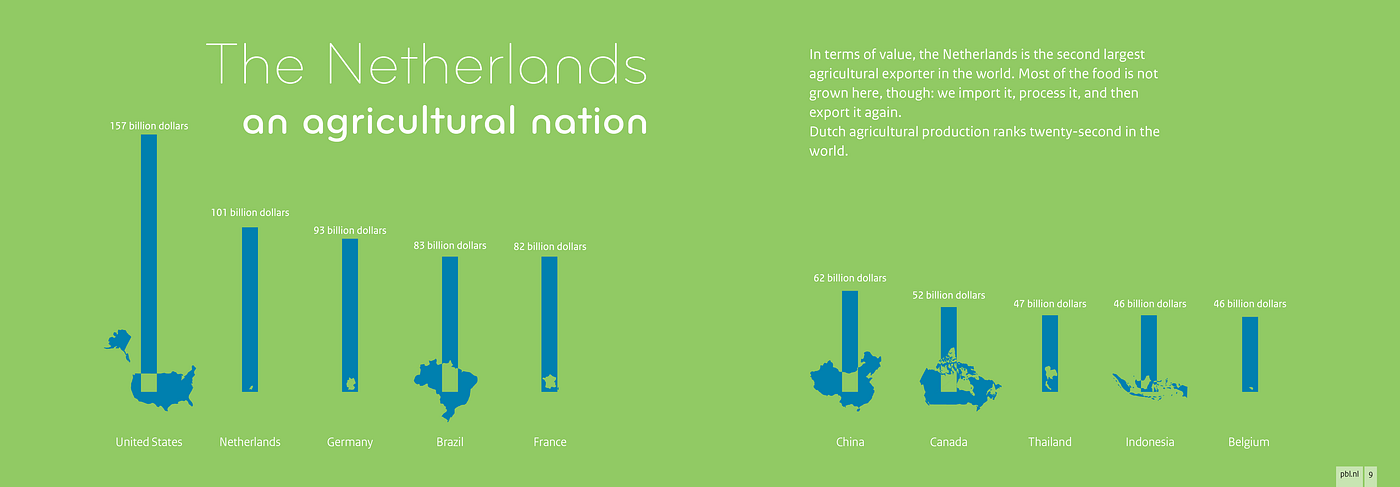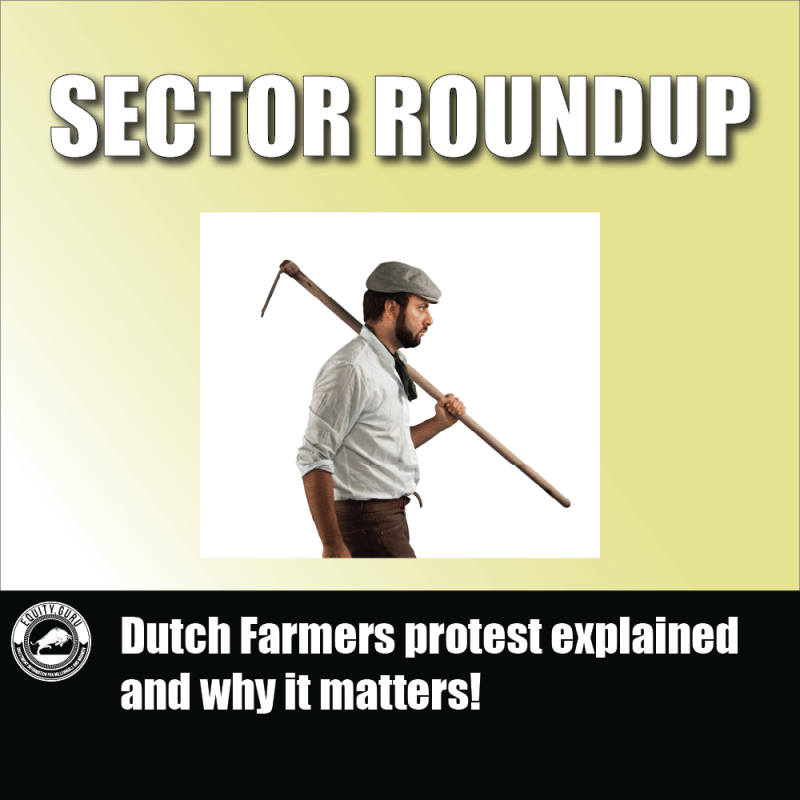Last week I spoke about the bear market in many agricultural commodities. Recession signs are running rampant, and I will cover the next ag commodities I believe will drop next. But before I do, we must talk about the big news making headlines in agriculture: the Dutch farmers protest.
I briefly touched upon it in last week’s agriculture sector roundup. At that time, the protest was still in the early days. Farmers were protesting on the highways and in front of government buildings. You have probably seen those images showing platoons of tractors on the highways.

Well things have escalated substantially.
We are talking about bonfires, larger turnout, and farmers blocking distribution centers for supermarkets. Heck the farmers even bought a tank! The police have fired shots at a tractor, thankfully nobody has been hurt.
I have been told that the highways are so plugged up in the Netherlands that one cannot even leave the country to neighboring Germany!
But it isn’t just the Netherlands. Now we are seeing farmers rise up in other parts of Europe including Denmark and Poland. If they will become on par to the protests in the Netherlands, we will just have to wait and see.
Dutch farmers are protesting because of a new law that plans to reduce nitrogen oxide and ammonia emissions by 50% by 2030. These gases are produced by livestock, and some estimates say that 30% of livestock farms will close under the new plan. The Dutch government is saying emissions of nitrogen oxide and ammonia must be drastically reduced close to nature areas that are part of a network of protected habitats for endangered plants and wildlife stretching across the 27-nation European Union. Livestock produce ammonia in their urine and feces. The government in the past has called on farmers to use feed for their animals that contains less protein as a way of reducing ammonia emissions.
Dutch cows must stop farting!
The ruling coalition wants to cut emissions of pollutants, predominantly nitrogen oxide and ammonia, by 50% nationwide by 2030. Ministers call the proposal an “unavoidable transition” that aims to improve air, land and water quality. They warn that farmers will have to adapt or face the prospect of shuttering their businesses. Literally kicking farmers off their land.
From a scientific article which can be found on the National Library of Medicine (NIH), the livestock industry has quite a large effect on the environment. Livestock emit almost 64% of total ammonia emissions, contributing significantly to acid rain and to acidification of ecosystems. Livestock are also a highly significant source of methane emissions, contributing 35–40% of methane emissions worldwide.
Methane has a 23-fold greater potential for global warming than carbon dioxide. The U.S. Environmental Protection Agency has shown that in the last 15 years methane emissions from pigs increased by 37% and emissions from cattle increased by 50%.

Farmers are not happy. That would be an understatement. Farmers argue that they are being unfairly targeted as polluters while other industries, such as aviation, construction and transport, also are contributing to emissions and face less far-reaching rules. You can understand their anger when they have to cull their livestock, and some families could go out of business.
The climate crisis is obviously an important issue. The thing is just like AI, to solve it many jobs and livelihoods will be replaced or disappear altogether. Will it be worth it? Especially at a time like now.
I have to say that the media coverage from the Netherlands hasn’t been the best. I am getting my info from friends living there, and independent journalists like Keean Bexte on Twitter.
In my opinion, it’s pretty shocking the Dutch government is doing this right now. At a time when food crisis, prices and shortages are an issue. Just last month, the media kept saying Russia is going to cause a food shortage by blocking Ukrainian grain ports. The Dutch government has effectively assured a food shortage in Europe and nobody talks about Rutte.
Some of you think this is fear mongering. Wait until Fall. Agriculture is a significant part of the Dutch economy. According to a national farming lobby group, there are nearly 54,000 agricultural businesses in the Netherland with exports totaling 94.5 billion euros.
Just do a google search for “Netherlands food exports”. You will find that by some accounts, the Netherlands are the second largest food exporter in the world. The main reason for standing at the 2nd position is the fertile soil and flat soil Netherlands enjoys. The temperature and climatic conditions are moderate for farming environments. Therefore, the crops growth, growth of plants and rearing livestock and poultry is done at utmost ease and effectiveness.

The Netherlands is the second biggest agriculture and food exporter in the world! Even with just a low population of 17 million people, the Netherlands has consistently been among the top contenders in the food export market. This brings the question of “why does the Netherlands export so much food?”.
Food exports are an important source of income for the Netherlands. The Dutch economy relies heavily on the agriculture sector and on exports, to the tune of 83% of its GDP. The efficient ways of farming and agriculture, allow the Netherlands to export a lot. Which brings in a lot of money for the Dutch economy. They are good and efficient at growing food which means that farming, which employs 2% of the labor force, can provide huge surpluses for exports. Food exports create a huge number of jobs in the Netherlands, in various sectors that work closely together.
So yes folks. What is happening in the Netherlands will DEFINITELY be affecting Europe. Especially the nations of Germany, Belgium, the UK, France and Italy, the Netherlands top 5 agricultural export destinations. We are hearing already about an energy crisis developing in Europe. Wait until Winter. It will be far worse. On top of that, add higher food prices and realistic shortages due to the situation in the Netherlands.
I will end with two charts of ag commodities I am following. I gave a breakdown of the moves in soybeans, corn and wheat last week. We hit first targets, and expect to see one more leg lower after a bounce.

Robusta coffee is what I am watching. We are likely to be confirming a weekly breakdown. We also have the very popular head and shoulders reversal pattern forming. Arabica coffee is another one that will follow. Still lagging in terms of breaking down below support.

Sugar is another one I am keeping a close eye on. Meeting my criteria for a reversal but just lacking the trigger. Which would be a breakdown of current support.
Very interesting times ahead and we shall see if the protests in the Netherlands inspire farmers in more European countries.


